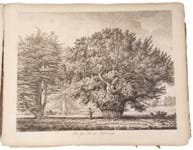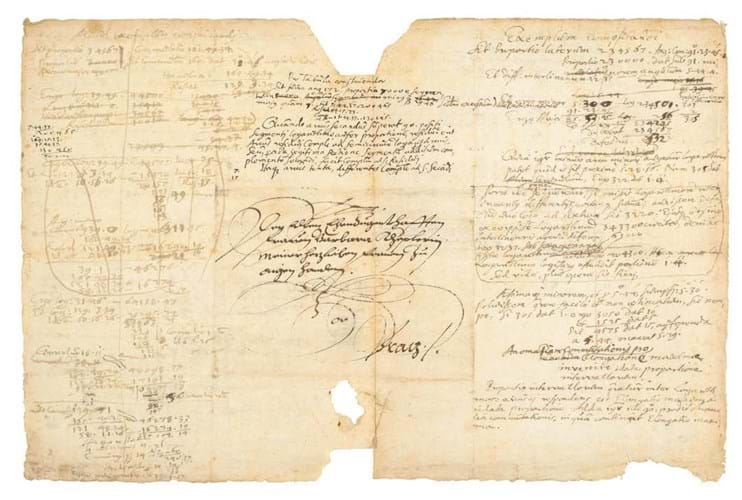
Part of the leaf bearing Kepler’s logarithm-inspired calculations on planetary movements that sold for $700,000 (£610,290) at Bonhams New York.
An autograph manuscript by Johannes Kepler (1571-1630) in which the German astronomer and mathematician uses the then newly developed mathematical tool of logarithms to calculate and determine the movement of the planets proved a star turn in one of two sales held at Bonhams New York (27.5/26/20/14.5% buyer’s premium) on October 25.
Written in Latin on the folded address leaf of a letter (not now present) that had been addressed to his late wife, who had died in 1611, Kepler’s densely constructed calculations mark an extremely rare appearance of his hand in the salerooms
Sold at $700,000 (£610,290, it shows Kepler working his way through problems of planetary motion with the aid of John Napier’s Mirifici logarithmorum canonis descriptio, published in 1614.
The degree to which Kepler utilised logarithms while deriving his Third Law is debated, said the saleroom, but many mathematicians believe that his burgeoning understanding of logarithms was critical to his breakthrough.
Biographer Max Caspar noted: “Kepler immediately saw clearly the significant simplification offered by the new logarithms for the many voluminous and time-consuming tasks of computation necessitated by the practice of astronomy.”
Most Kepler manuscripts, said the saleroom, were purchased by Catherine the Great in the late 18th century and given to the Pulkovo Astronomical Observatory.
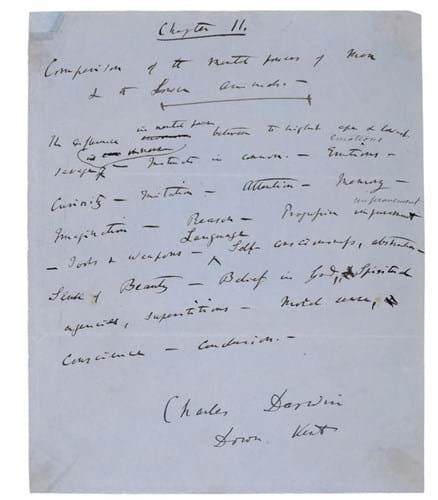
A signed leaf bearing Charles Darwin’s outline plans for Chapter II of his 1871 book, The Descent of Man, which took $170,000 (£143,855) at Bonhams New York.
From a very different field of study came a signed leaf from Charles Darwin’s Descent of Man – a draft outlining one of the subjects covered in Chapter II, titled ‘Comparison of the Mental Powers of Man and the Lower Animals’ that shows numerous deletions, additions and emendations.
Thought likely to be a later presentation item, it sold at $170,000 (£143,855).
Start of San Francisco
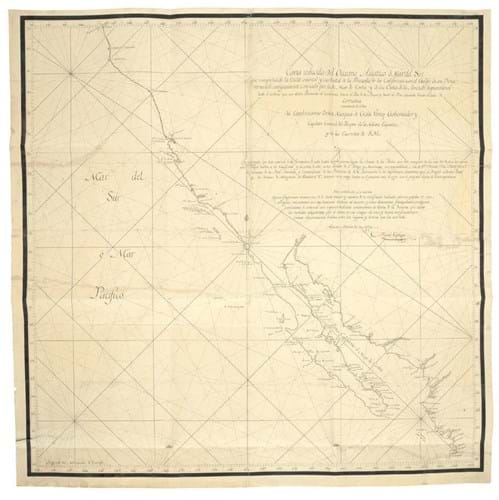
The signed, 1770 manuscript map of coastal California and America’s Pacific shores produced by Miguel de Costansó that sold at Bonhams New York for $550,000 (£479,510).
Also offered in the same day at Bonhams in a separate Exploration and Travel Literature auction, a rare manuscript map of coastal California dating from 1770, the first to depict San Francisco Bay and one that marks the beginning of Spanish exploration and settlement in the region, was sold for $550,000 (£479,510).
It bears the signature of Miguel de Costansó (1714-1814), a Catalan cartographer, cosmographer and engineer who accompanied a 1769- 70 voyage under the command of Gaspar de Portolá, governor of what was then a Spanish colonial province that included what we now know as California and parts of present-day Mexico.
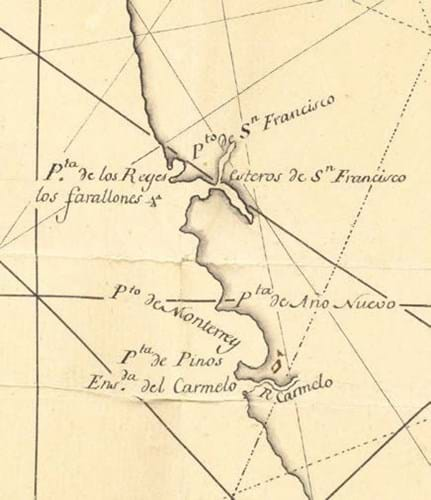
An enlargement of the key section that depicts the San Francisco Bay area on the signed, 1770 manuscript map of coastal California and America’s Pacific shores produced by Miguel de Costansó that sold at Bonhams New York for $550,000 (£479,510).
Three versions are recorded, the other two being an earlier manuscript version that does not show San Francisco Bay and a 1771 example printed in Spain. The map had been created in conjunction with Costansó’s written report of the expedition, published in 1771 as Diario Historico de los viages de mar, y tierra hechos al norte de la California, the first book on the region.
Sold for $160,000 (£139,495) in the New York auction was a printed broadside of 1790, An Act for the Encouragement of Learning, that created the legal framework for the first American copyright law.
The notion of such a law had been written into the Constitution, but this was the document, signed by Thomas Jefferson, that created the legal framework for its implementation.
Only three institutional copies are recorded and though a copy was offered in the Streeter sales of 1969, that one was unsigned.
Unknown Douglass letter
An important and previously unknown letter of 1847, written and signed by an American abolitionist and former slave, Frederick Douglass, was sold for $280,000 (£244,115).
Two years earlier, Douglass had fled the US for fear of being taken up as a fugitive by his ex-owner. In this letter, written while returning for the first time as a free man, he describes his mistreatment during his voyage aboard the Cambria, the same ship that had carried him to England in 1845.
Addressed to a so far unidentified “beloved Sarah”, the letter explains that he had bought a first class ticket, but on boarding the ship found that his berth had been given to someone else.
On protesting, he was told that he could board the ship, but was directed to the steerage section and not allowed in the saloon, something he later characterised as “…a miserable attempt to propitiate the American slaveholders and their abettors. These would have felt degraded to have been seated at the table with me…” But all of them, he added, would have been glad to have him as a slave.
The letter is not recorded in Douglass’ known correspondence, and appears to have been unknown to scholars, said Bonhams.



